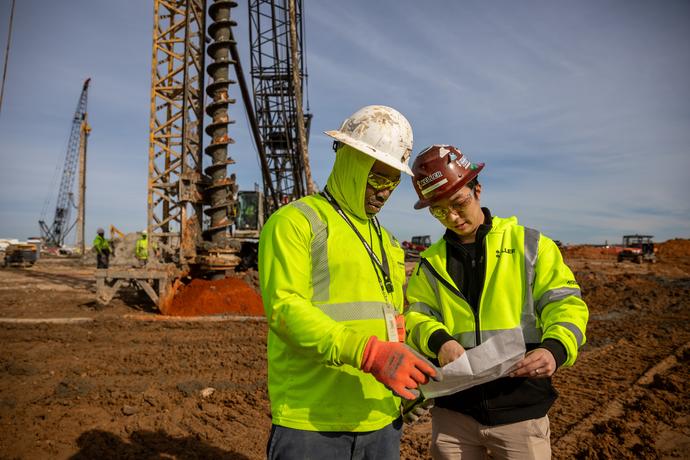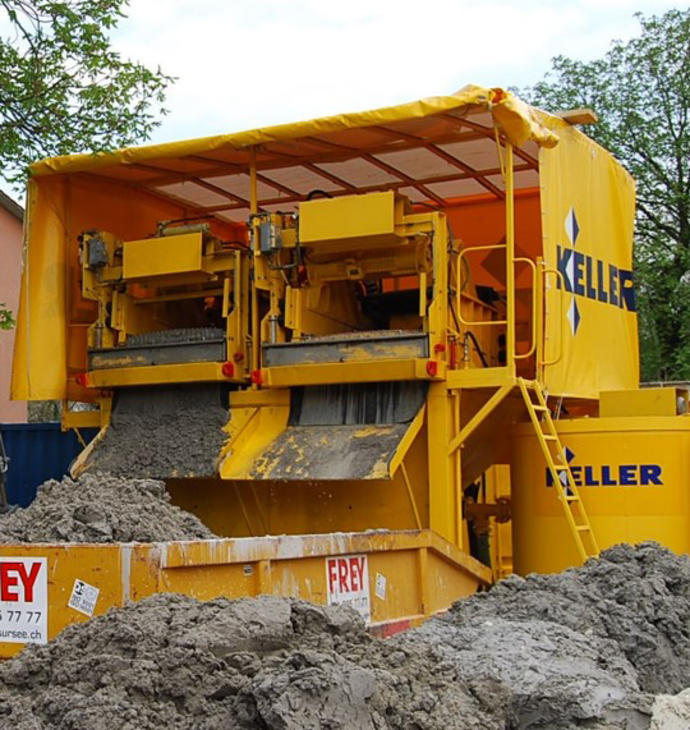This initiative reflects the contribution Keller can make towards the circular economy. In particular, we look to reduce raw material use, increase our use of secondary materials, reduce waste to landfill and allow for pile reuse.
Reducing material use

We recognise the large volumes of materials used and produced on our sites, so we have a number of projects to improve these impacts.
In 2024, we led the production of cross-sector research and development of an updated circular economy guide for geotechnical companies. Critically, this shares good practices that all geotechnical companies can adopt to improve their impact on the circular economy. This will help the whole sector understand their current circular economy impacts and meet upcoming
legislation in this space.
Internally, Keller routinely promotes ground improvement solutions as a way to reduce raw material use on site. Ground improvement uses natural or recycled materials to improve ground load carrying capacity. This reduces or completely removes the need for heavy foundations. In turn, this reduces the volume of cement and steel used on site, saving primary resource use, and potentially offering a financial saving to our clients. The reduced need for heavy foundations also reduces the carbon intensity of the overall project. More details on what we ask of our supply chain in terms of waste reduction can be found in our Supply Chain Code of Business Conduct
Reducing waste

As well as addressing our use of raw materials, we are also keen to reduce waste. Of all the geotechnical solutions we offer, our jet grouting solutions have traditionally used the most water and created the most waste spoil.
Therefore, our research and development teams have been trialling ways to monitor and reduce these impacts. Using a combination of filter chamber presses, centrifuges and shale shakers, we are now able to reduce the volumes of waste water and spoil produced on jet grouting sites. As well as reducing the cost of waste disposal, this has the added benefit of reducing the number of trucks required to transport materials off site. This reduces congestion around our sites, improving air quality and reducing our impact on the local community. We also have a number of ongoing research projects looking to use alternative materials for jet grouting and allow the reuse of grout-filled spoil.